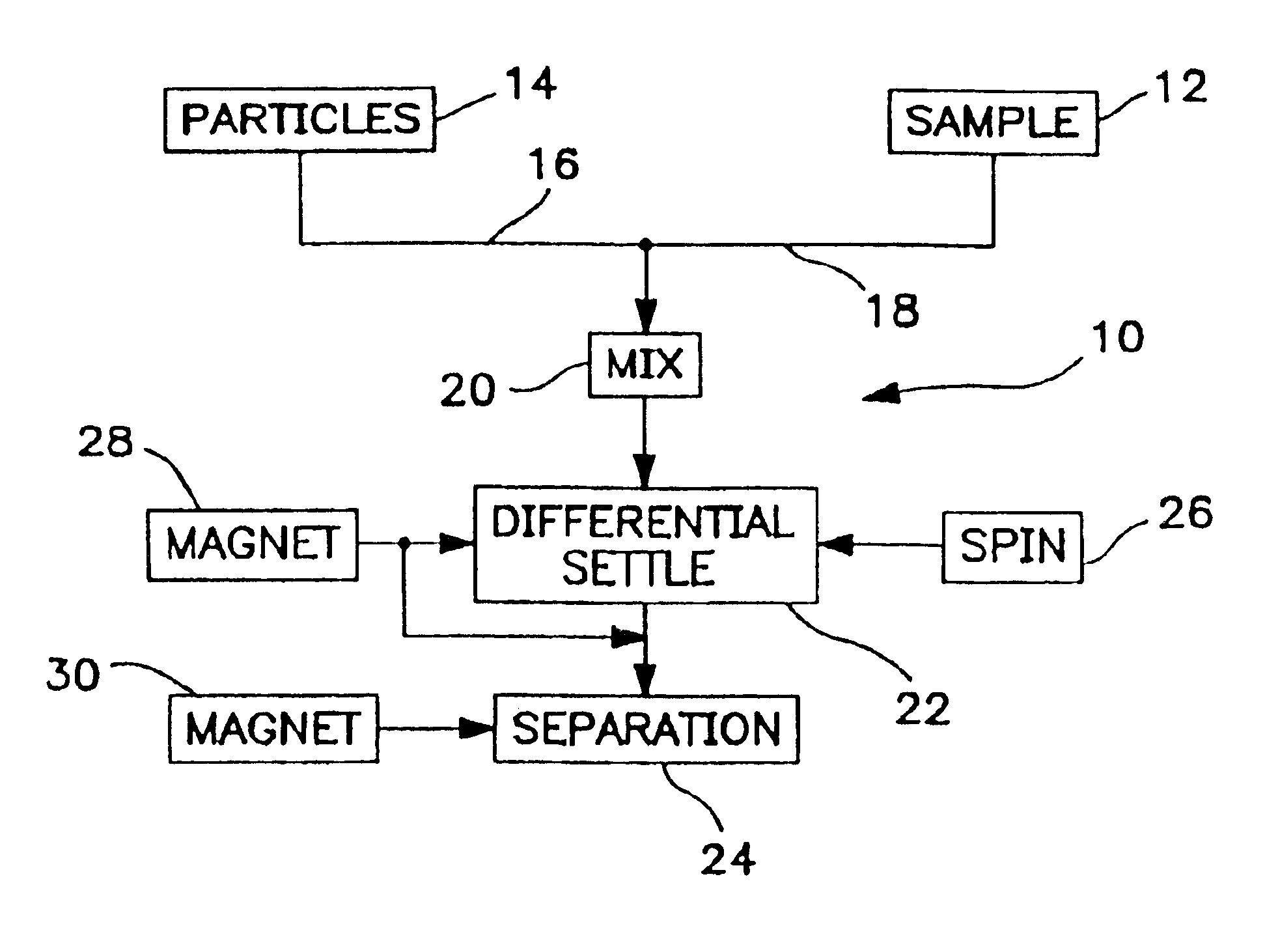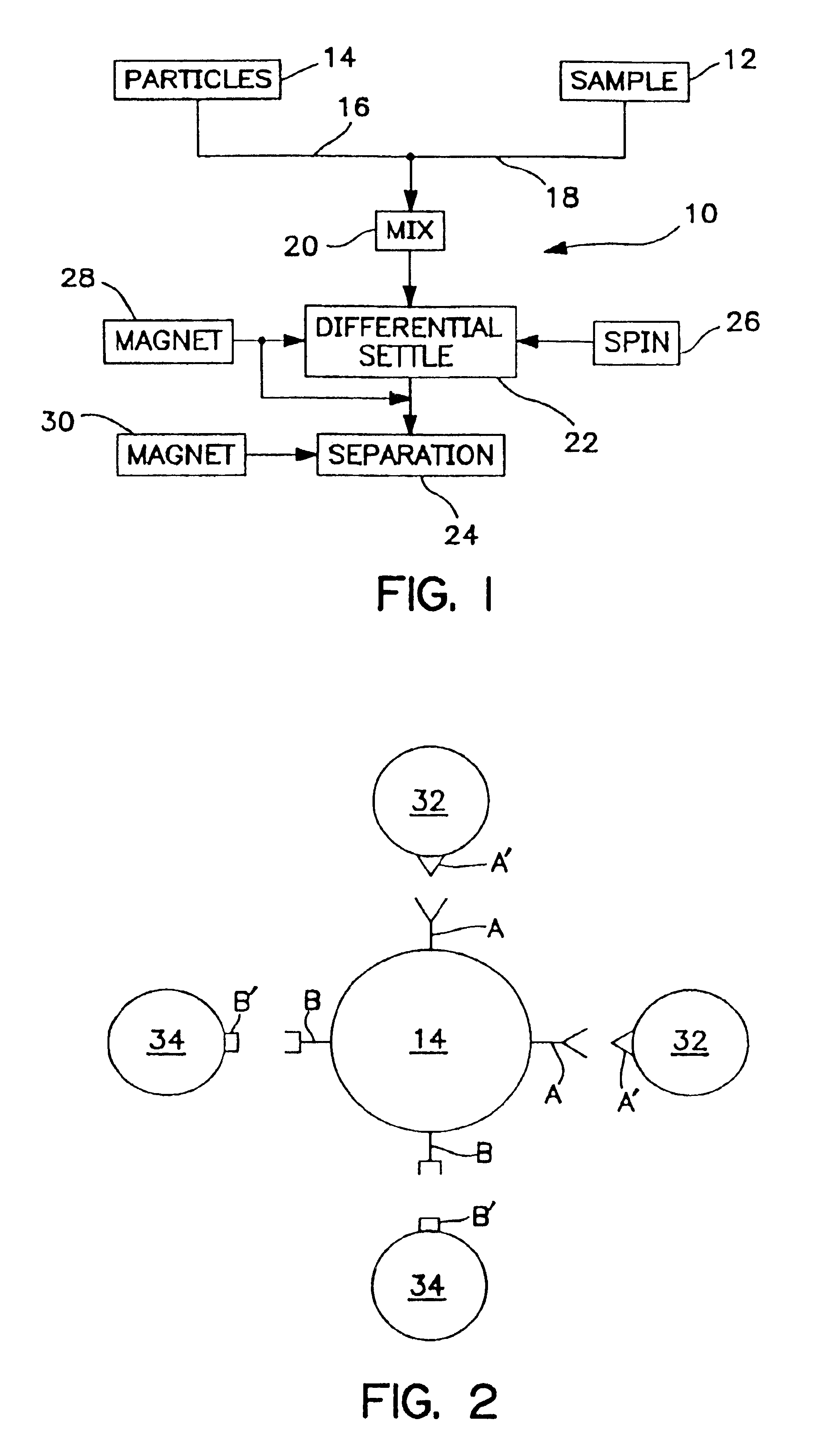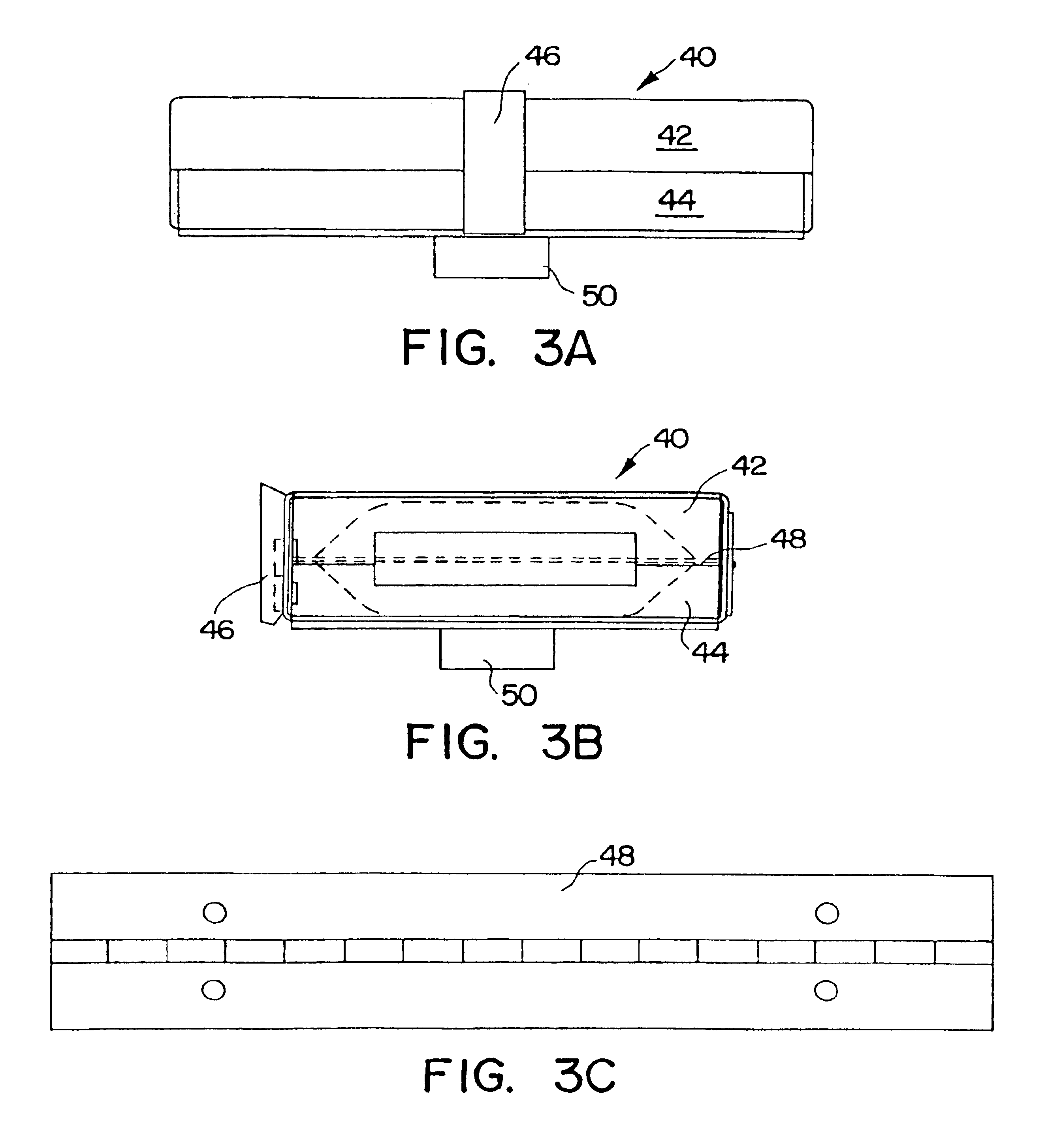Method of selection of a population or subpopulation of a sample utilizing particles and gravity sedimentation
a technology of gravity sedimentation and particle, applied in the field of sampling population or subpopulation of sample utilizing particle and gravity sedimentation, can solve the problems of reducing yield, general inability to achieve, and relatively expensive magnetic microspheres, and achieves high yield, high yield of cells, and enhanced number of remaining cells
- Summary
- Abstract
- Description
- Claims
- Application Information
AI Technical Summary
Benefits of technology
Problems solved by technology
Method used
Image
Examples
example 1
Preparation of Granulocyte Population from Whole Blood
[0123]A portion of a whole blood sample collected in EDTA was run on a Coulter STKS instrument (which removes RBC's by lysing) as the control for the following depletions, as illustrated in FIG. 4A. The control illustrates the normal WBC population patterns utilizing DC (Coulter volume) and light scatter (LS) parameters, including populations of L's 6Q, M's 62, granulocytes (N's 64 and E's 66) and a debris portion 68. The appropriate amount of nickel particles coated with antibody and previously tittered, were placed in a 12×75 mm glass test tube and washed three times by gravity settling with a solution of Isoton II (Coulter Corporation) containing 4.5 gm / L of glucose (IG buffer). Three milliliters of the whole blood sample was added to the washed particles and the tube capped. The tube was then placed on an end-over-end roller at approximately 30 rev / min. This was found to be appropriate to keep the particles in suspension, all...
example 2
Lymphocyte Preparation using Nickel Particles with Distribution and Retention of Lymphocytes
[0125]A lymphocyte preparation was made using antibody coated nickel particles as illustrated in FIGS. 5A and 5B. Results of a whole blood control run on a Coulter STKS hematology analyzer are illustrated in FIG. 5A. The normal pattern resulted in 27 percent L's 70, 9 percent M's 72, 61 percent N's 74 and 2 percent E's 76. A combination of the appropriate amount of Ni particles previously labelled with PLT-1 (70 μl particles / ml blood), KC-48 (50 μl particles / ml blood) and MY-4 (100 μl particles / ml blood) for 10 ml of whole blood was placed in a 15 ml polystyrene test tube and washed three times with IG buffer. The supernatant from the last wash was removed and 10 ml of whole blood which had been collected in EDTA was added to the particles. The particles were resuspended in the blood and placed on an end-over-end roller for four minutes. Following the mixing, the tube was placed vertically in...
example 3
Recovery of T8 Cells from Antibody Labeled Nickel Particles After Depletion of Whole Blood
[0126]Nickel particles labeled with T8 antibody were initially used to deplete whole blood of T8 lymphocytes. T8 labeled nickel particles at a suboptimal dose for depletion (15 μl vs. 50 μl / ml of whole blood) were washed three times in IG buffer. Whole blood was added to the particles and placed on an end-over-end roller for ten minutes, and set vertically for five minutes. The depleted blood was removed, and the particles and bound cells were washed twice by resuspending in a volume equal to half the original amount of sample with IG buffer inverting lightly and the particles and bound cells allowed to settle out. Following the washing, the particles / cell pellet was resuspended in IG buffer and placed on a magnetic stirrer for mechanical disruption for about thirty seconds. The disruption results in separating the cells from the particles. The supernatant was separated from the particles by al...
PUM
| Property | Measurement | Unit |
|---|---|---|
| volume | aaaaa | aaaaa |
| diameter | aaaaa | aaaaa |
| diameter | aaaaa | aaaaa |
Abstract
Description
Claims
Application Information
 Login to View More
Login to View More - R&D
- Intellectual Property
- Life Sciences
- Materials
- Tech Scout
- Unparalleled Data Quality
- Higher Quality Content
- 60% Fewer Hallucinations
Browse by: Latest US Patents, China's latest patents, Technical Efficacy Thesaurus, Application Domain, Technology Topic, Popular Technical Reports.
© 2025 PatSnap. All rights reserved.Legal|Privacy policy|Modern Slavery Act Transparency Statement|Sitemap|About US| Contact US: help@patsnap.com



